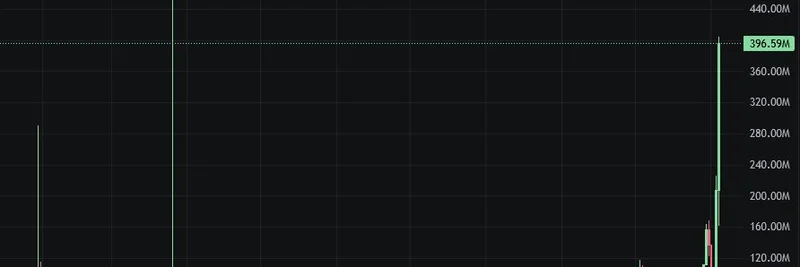In the wild world of meme coins, where fortunes can flip faster than a viral tweet, $JELLYJELLY on Solana has been making waves. But not all for the right reasons. A recent thread on X by @StarPlatinumSOL has shone a spotlight on what looks like some shady dealings behind its impressive 4x pump in just a week. If you're dipping your toes into meme tokens, this is a story worth paying attention to—let's break it down step by step.
What is $JELLYJELLY?
$JELLYJELLY isn't your average pump-and-dump scheme. Launched on the Solana blockchain, it's a memecoin with ties to real-world innovators. Created by Iqram Magdon-Ismail, co-founder of Venmo, and investor Sam Lessin, it's linked to an AI-powered podcasting app. This blend of tech and meme culture gave it some initial legitimacy when it debuted earlier in 2025. But as with many meme coins, volatility is the name of the game, and recent events have raised eyebrows about its organic growth.
For the uninitiated, meme coins are cryptocurrencies inspired by internet memes, often lacking traditional utility but thriving on community hype and social media buzz. Solana's fast and cheap transactions make it a hotspot for these tokens, with platforms like Raydium serving as popular decentralized exchanges (DEXs) for trading them.
The Recent Surge and Suspicious Chart Action
Over the past week, $JELLYJELLY's price skyrocketed, pumping over 200% in a single day according to reports from Gate.io. But take a look at the chart—it's anything but smooth sailing.
That massive green candle screams anomaly. It shot up to around $550 million in market cap before plummeting, leaving many to question if this was genuine demand or something more orchestrated. Replies in the thread echoed this, with one user pointing out another coin's similar "holy candle" and others calling it an obvious rug pull waiting to happen.
Allegations of Manipulation: The Deep Dive
The X thread pulls no punches, claiming clear signs of coordinated trading and extreme supply concentration. Here's the crux:
Whale Dominance: A staggering 60% of the total supply is held by just three wallets. The top holder controls nearly 44%—that's over 441 million tokens worth about $155 million at peak prices. These aren't small-time holders; they're linked to major exchanges like Gate.io's cold wallet and Bitget's.
Top Wallets Exposed: Specific addresses were called out, including:
- u6PJ8DtQuPFnfmwHbGFULQ4u4EgjDiyYKjVEsynXq2w (Gate.io, 44.1%)
- 7TWnq4WeYcwQWBCwKeEX2Q9xqVtthPGkB7adNvueuVuh (Bitget, 11.7%)
- 37EEinCCBZFrMycE1n7ZEtzxhtMdQrdPCvCnmGC4bGkT (Private whale, 4%)
Together, the top five wallets hold 67.6% of the supply, leaving retail investors with scraps.
Coordinated Buying: Wallets acting as market makers were highlighted, with patterns like multiple buy waves totaling hundreds of thousands of dollars. One wallet executed "bot pattern" sells in round amounts, suggesting automated manipulation.
Red Flags Galore: The thread notes $30 million moved from Raydium to centralized exchanges (CEXs) post-pump, leveraged futures, and wash trading-like activity on DEXs. Wash trading, for clarity, is when someone buys and sells the same asset to artificially inflate volume and mislead the market.
This isn't organic growth driven by community enthusiasm—it's more like a handful of big players pulling strings.
Echoes from the Past: The Hyperliquid Fiasco
This isn't $JELLYJELLY's first brush with controversy. Back in March 2025, the token was at the center of a major incident on Hyperliquid, a decentralized perpetuals exchange. A whale shorted the coin massively, leading to a short squeeze that caused over $12 million in losses for the platform's liquidity providers. Hyperliquid ended up delisting the token amid the chaos.
Reports from BeInCrypto and Binance Square detail how whales manipulated the price, exploiting the platform's mechanics. It's a classic tale of how meme coins can turn into battlegrounds for sophisticated traders, often at the expense of everyday participants.
What Does This Mean for Meme Token Investors?
If you're eyeing $JELLYJELLY or similar Solana memecoins, proceed with caution. While the hype can lead to quick gains—some early holders reportedly saw 1000x returns—the risks are sky-high. Supply concentration like this means a single whale dump could tank the price overnight.
At Meme Insider, we always recommend doing your own research (DYOR). Check token distribution on tools like Solana Explorer, monitor on-chain activity, and stay away from assets with opaque holder structures. The crypto space is evolving, but meme coins remain a high-stakes gamble.
Stay tuned for more updates on $JELLYJELLY and other trending tokens. If you've got insights or experiences with this one, drop them in the comments below. Remember, in memes, as in life, not everything is as jelly-sweet as it seems.


